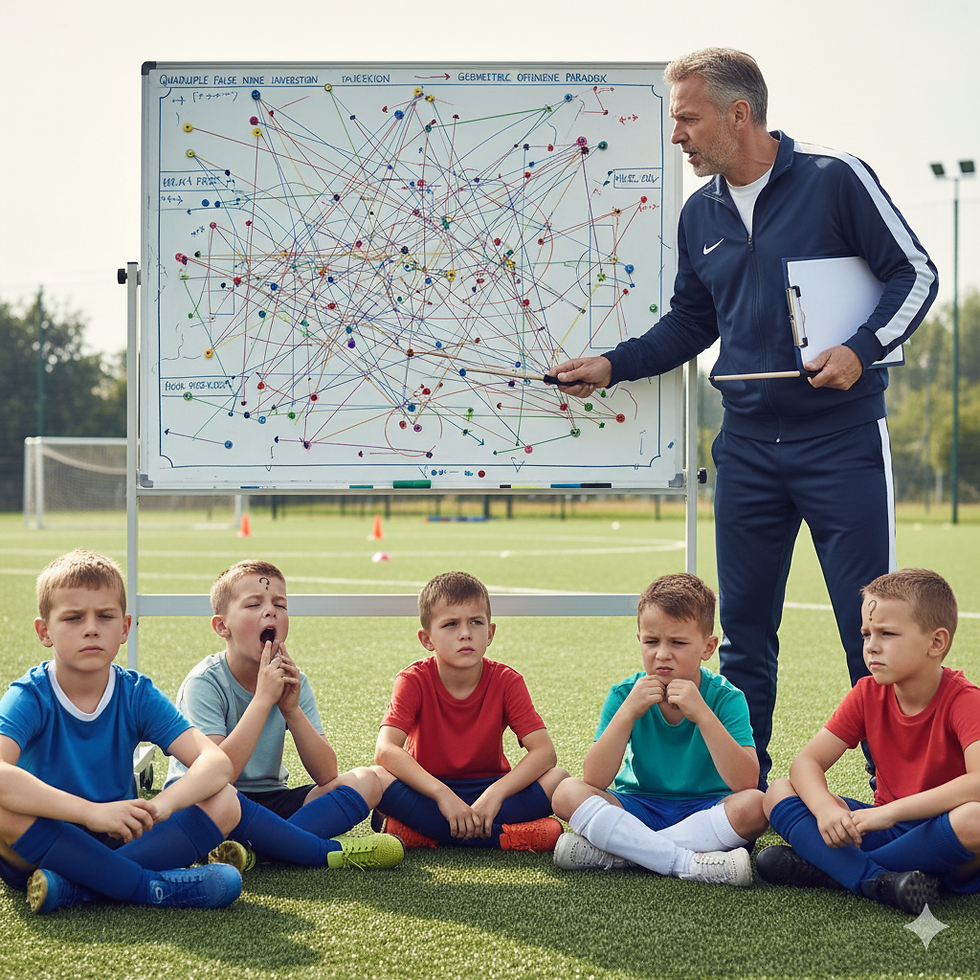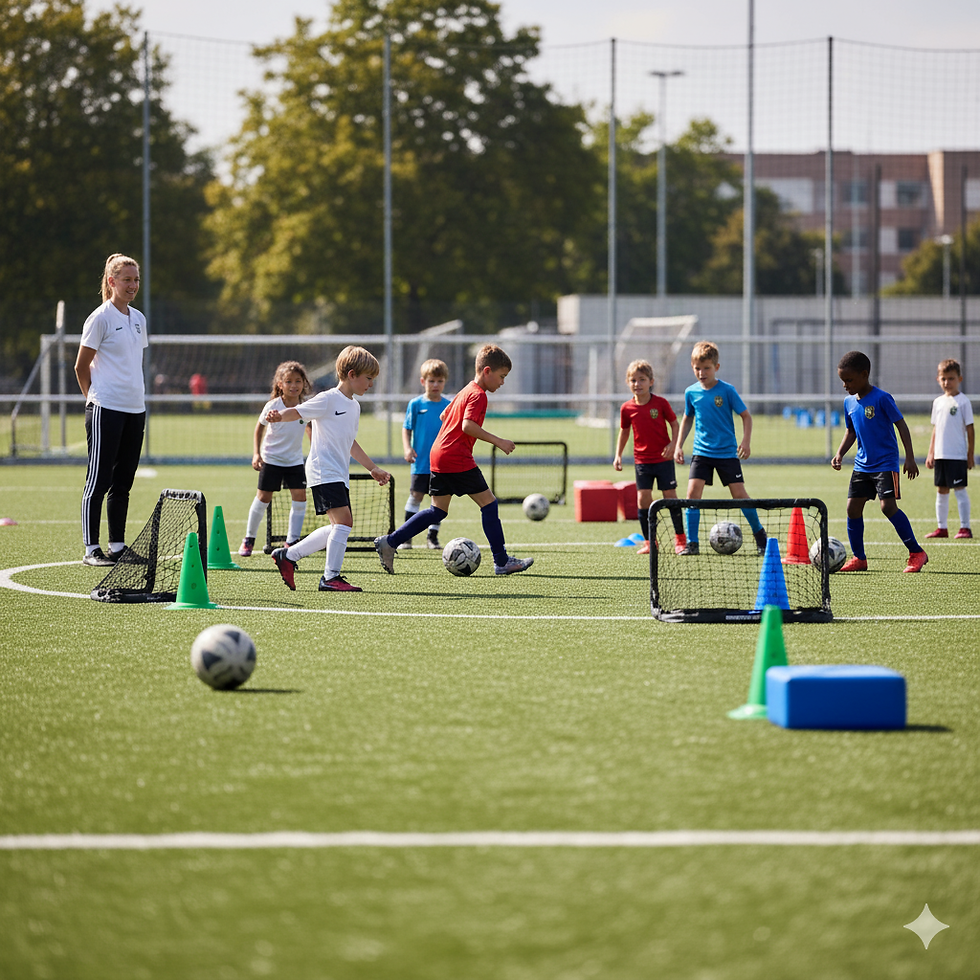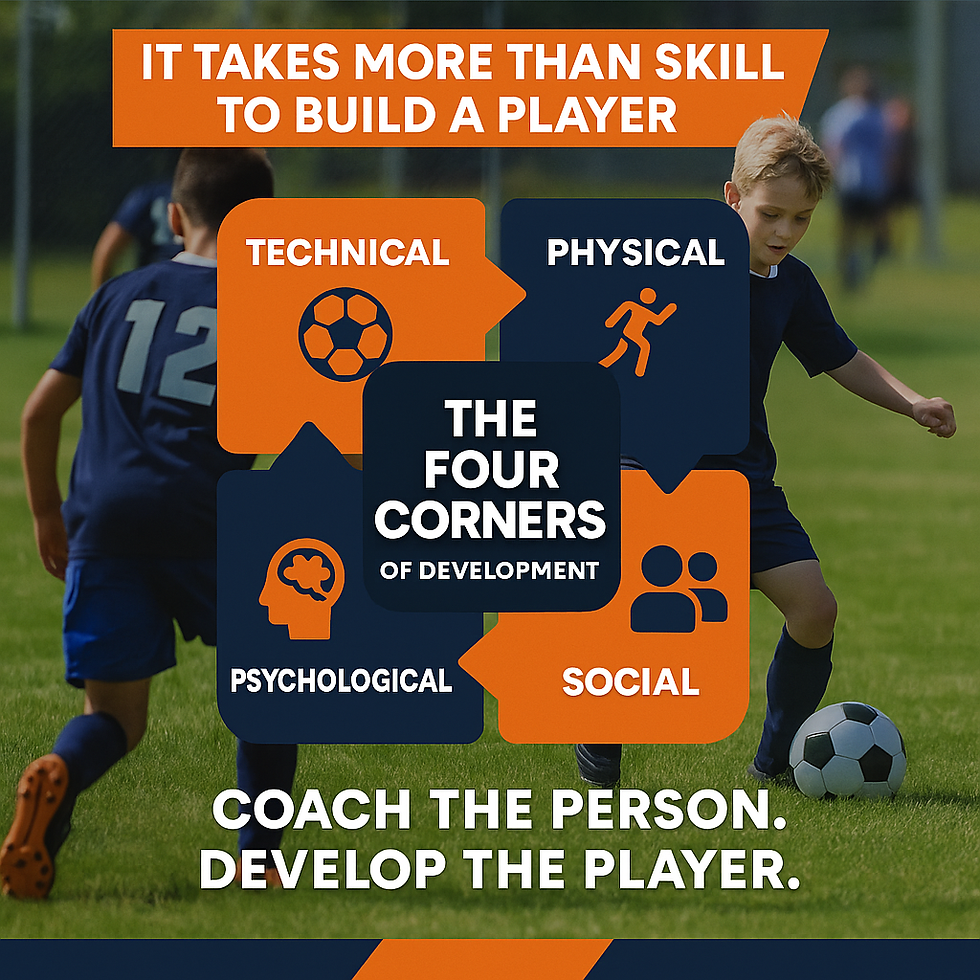Representative Design: The Key to Smarter, Stronger Youth Players
- Lindsay van Kessel

- Sep 18
- 3 min read
At Grumpy Soccer, we’re blunt about development: too much of our youth training is ineffective.
Players spend hours in lines, copying robotic drills, or running laps that have nothing to do with soccer. Sure, it looks neat and organized, but here’s the problem: the game isn’t neat.
Soccer is chaotic, unpredictable, and constantly changing. If training doesn’t reflect that reality, we’re not preparing kids for the real thing. That’s where representative design comes in.

What is Representative Design?
Representative design means building training activities that represent the actual game environment. Instead of practicing skills in isolation, players develop them in the same messy, pressured, decision-filled situations they’ll face in a match.
This approach forces players to:
Scan and read the game – Where are teammates, opponents, and space?
Make real decisions – Should I dribble, pass, or shoot?
Execute skills under pressure – Can I still control the ball, finish, or defend when it counts?
The big difference: kids aren’t told exactly what to do. They learn by adapting, problem-solving, and experimenting in realistic scenarios.
Why Parents Need to Know This
Parents often watch a session and think:
“Why are they playing small games instead of doing drills?”
“Why does this look messy?”
“Why don’t they practice shooting in lines like I used to?”
Here’s the truth:
The game is messy, and training must be messy.
Small-sided games give players way more touches, decisions, and pressure situations than waiting in a line.
Shooting in a line with no defender is not soccer—it’s just kicking a ball at a target.
Representative design might not look as “clean” to the sidelines, but it’s exactly what prepares players to perform when the whistle blows.
Why Coaches Need to Commit to It
As coaches, it’s tempting to stick with structured drills. They’re easy to organize, they look sharp, and players are kept busy. But if we’re serious about player development, we have to move beyond the “cone army” approach.
Representative design gives players ownership.
Instead of spoon-feeding answers, we create problems for them to solve. This is where skill acquisition and decision-making fuse together—every technical action has a tactical reason.
Practical Examples of Representative Design

Here’s how it plays out on the pitch:
Example 1: Shooting Practice
Non-representative: Players line up 20 yards out and take turns shooting into an empty net. Technique is practiced, but no decision-making, no pressure, no game context.
Representative: Small-sided 3v3 with nets set back from the grid to prevent direct goaltending. Players must break pressure, combine passes, and create shots with a defender chasing. Now shooting is practiced with timing, pressure, and decision-making included.
Example 2: Passing and Movement
Non-representative: Players pass in a square around cones, rehearsing patterns they’ll likely never see in a match. Everyone knows where the ball is going next.
Representative: 4v2 rondo with conditions (e.g., can’t pass back to the same player). Players constantly scan, find passing lanes, move off the ball, and protect possession under pressure.
Example 3: Defending
Non-representative: Players jog through “shadow defending” drills where the attacker doesn’t even try to beat them. No unpredictability.
Representative: 2v2 or 3v2 scenarios where defenders must delay, press, or cover space. They learn when to step, when to recover, and how to defend as a unit—just like the game demands.
The Long-Term Payoff
Representative design doesn’t promise instant results. In fact, the early sessions may look sloppy, and players may fail more often. But that’s exactly the point—failure in training is where learning happens.
Over time, kids develop:
Game intelligence – They know why they’re using a skill.
Adaptability – They can handle unpredictable situations.
Confidence – Because they’ve faced pressure before and found solutions.
When training is game-like, players show up on match day already comfortable with chaos. Instead of freezing when things break down, they problem-solve, adapt, and play with freedom.
The Grumpy Soccer Take
We don’t run sessions that impress on the sidelines. We care about building resilient, creative, adaptable players who thrive under pressure. We believe presentative design is how you get there.
So the next time you see a training session that looks a little wild, remember: the chaos is the learning. And in soccer, the players who learn to thrive in chaos are the ones who succeed.
At Grumpy Soccer, we’ll always take messy sessions that build game-ready players over tidy drills that may build nothing at all.






Comments